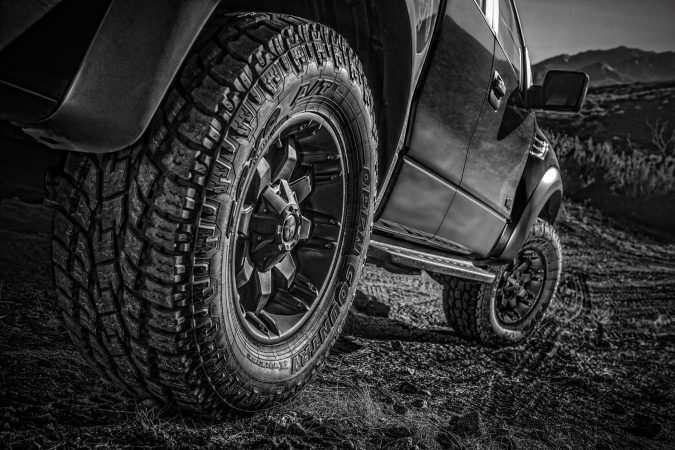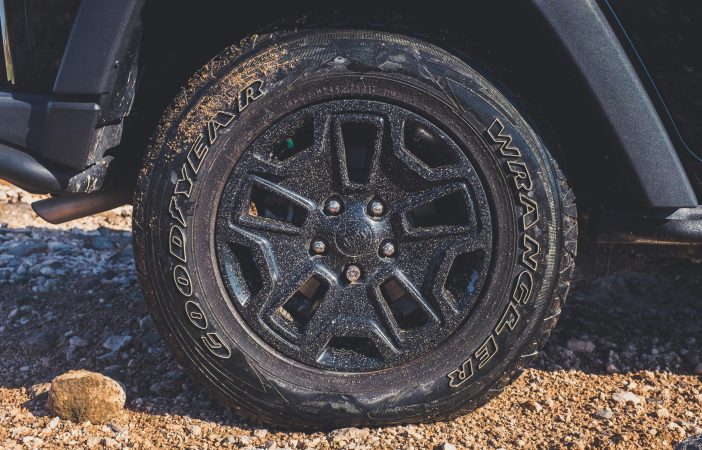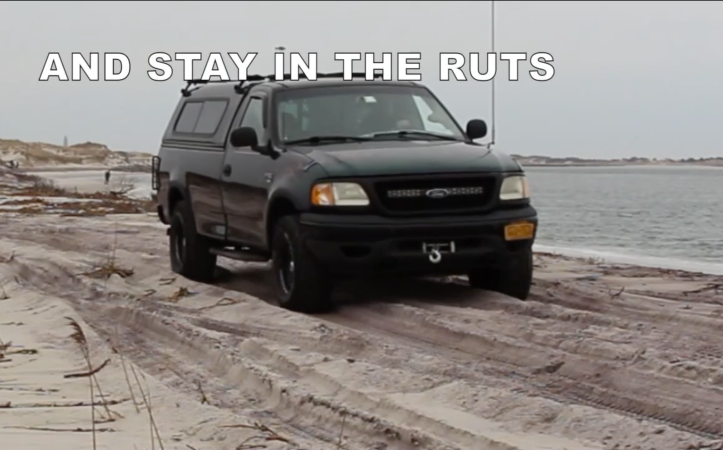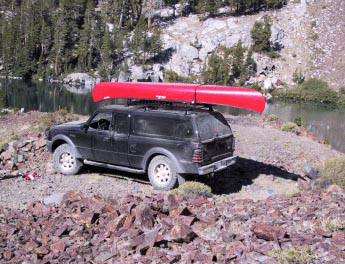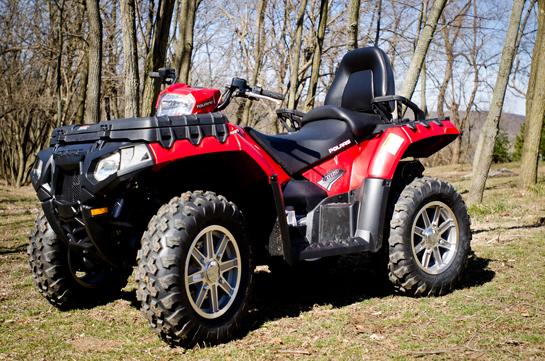We may earn revenue from the products available on this page and participate in affiliate programs. Learn More ›
The high-volume, low-pressure tires that are used on ATVs are unique among wheeled vehicles because they’re designed specifically to deliver outstanding traction over almost any terrain situation. And while ATV tires are designed to withstand tremendous abuse, you’ll get more performance from your four-wheeler and longer service from its tires if you treat them right.
Pump Up
The most important rule for ATV tire performance is maintaining the correct tire pressure as specified by the manufacturer. Check tire pressure once a month (more often if you change elevation frequently). Use the low-pressure gauge that comes with the tool kit or invest in a dial-type gauge designed to read between 0 and 20 pounds per square inch (psi). Under-inflated tires will cause the ATV to handle sluggishly in turns, and can lead to cut sidewalls or even a bent rim if the wheel strikes a sharp object and deflects the tire tread all the way to the rim.
It’s not uncommon for riders to over-inflate tires to gain more speed on hard trails. While over-inflation reduces rolling resistance, it also causes the tire to ride on the middle of the tread, which can lead to premature tire wear down the center. And because the tire is using just that center portion of the tread, traction may be decreased and the ATV will feel loose or “push” in turns on hard trails. An over-inflated tire is also more prone to puncture damage because the tire can’t deflect over sharp objects.
Pavement Pounding
Riding on pavement is illegal in most places and unsafe for a number of reasons, but it’s also murder on ATV tires. It quickly wears off the sharp edges or corners of each tread block or lug, resulting in diminished traction in slick clay or soft earth on trails. If a trail runs along a road, ride on the shoulder. If you must ride on pavement, keep your speed down to reduce friction and heat buildup on the tire treads. Also avoid spinning the wheels on gravel or sliding through turns.
Switching Styles
Today’s original-equipment ATV tires are designed as an integral component of the vehicle, with a tread designed to deliver good traction and performance in a variety of conditions. If you spend most of your time riding in sand or gumbo swamps, you may realize better performance by switching to a tire designed for that condition. However, keep in mind that a larger tire size or a more aggressive tread design will come with compromises, including diminished traction in some conditions, a rougher or noisier ride and boggy engine performance. For good all-around performance, replacement OEM tires or tires of similar size and tread design are usually the way to go.

